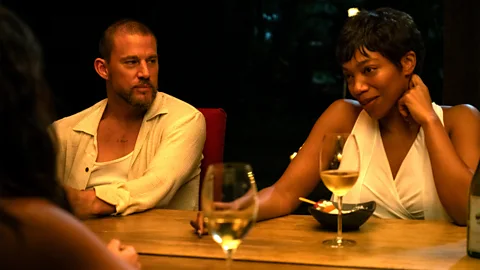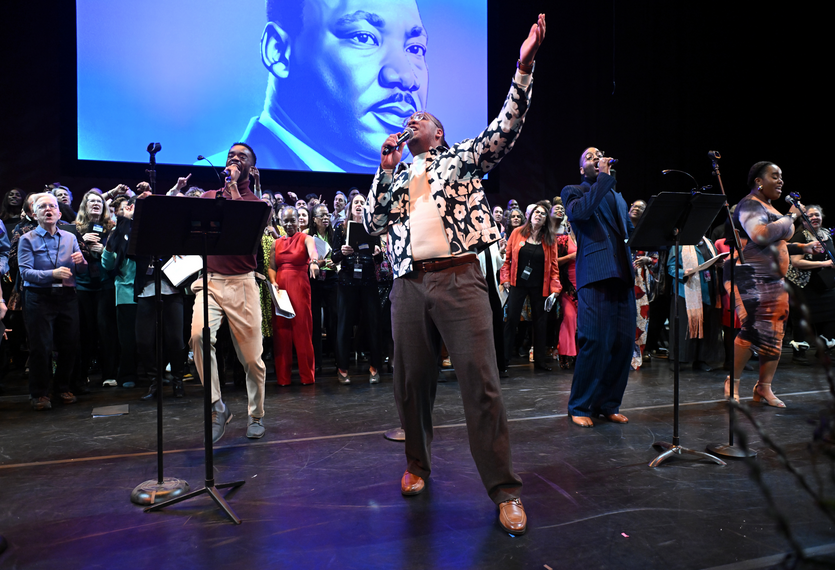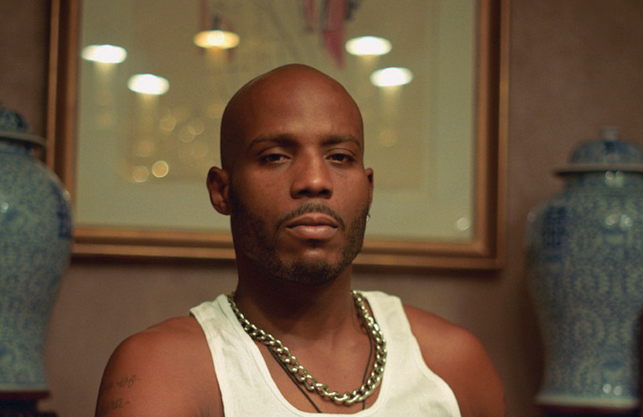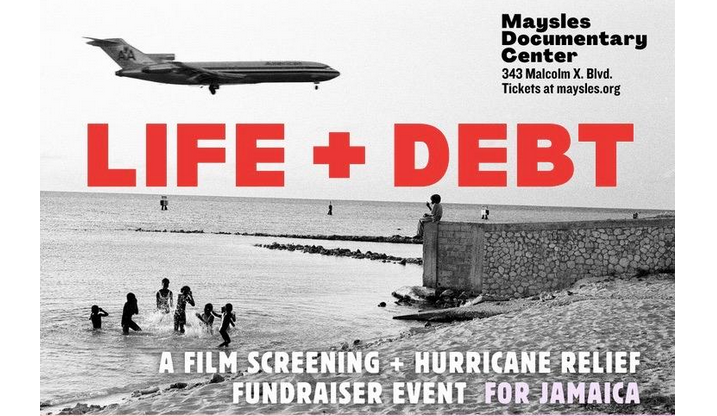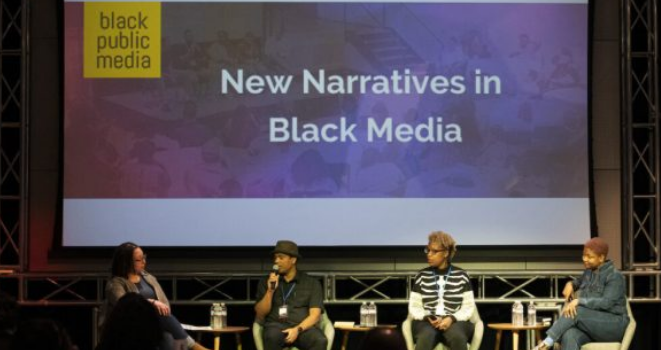“Blink Twice,” the first film that Zoe Kravitz directs, comes into the world with a high bar set. Placed at the crossroads of social thriller and ‘eat the rich’ humor, the film explores different concerns of the late-stage neoliberal society, including but not limited to misogyny and the dark facet of greed. However, with this supreme aim in mind, the creators are unable to provide a perfect and comprehensible plot in the movie; thus, the audience gets a colorful and, maybe, shining but inconclusive picture.
Plot Overview
The story revolves around Frida, played by Naomi Ackie, a bored cocktail waitress who wants nothing more than to be glamorous and leave the joint. Her shot at the bright lights happens when she is offered a chance to be a plus one, on an esteemed private island owned by Slater King a disgraced tech business magnate played by Channing Tatum. At first, it seems like the island is a dream for Frida, but, gradually, she starts doubting the perception of that place. Starting as the ultimate vacation, the film takes a dark twist into a psychological suspense where Frida has to investigate the dark secrets of the island and the people inhabiting it.
Visual and Cinematic Style
In “Blink Twice”, Kravitz as a director demonstrated good attention to visuals. The film is very stylish and every shot is made with the specific purpose of showing the glamour and attraction of power and money. Shooting by Adam Newport-Berra, who has previously worked on “The Last Black Man in San Francisco” as well as “Euphoria,” gives the film’s visuals a clear, undazzling shine of the island’s excess. Right from the glint in the glasses to the setting which is all bright champagne and sunnies, the viewer is drawn into a reality that is as glamour-filled as it is fake.
- Visual Highlights:
- The cinematography captures the glamour of the island environment and beauty.
- The sound brought an even greater sense of immersion: every crackle of the ice, every pour of the champagne felt weighted.
Themes and Social Commentary
“Blink Twice” tries to interconnect several thematic motifs, using themes of the modern Western world, including the events of the #MeToo movement, trauma, and the degeneration of the moral standards of the ultra-rich. The movie is based on the existing themes related to such characters as Jeffrey Epstein which brings an element of realism to the context. However, what can be seen as one of the film’s strengths – its efforts to convey as many themes as possible – can appear as a weakness since the film often seems to be overwhelmed by all of the themes it tries to address.
Kravitz’s motives seem genuine, however, the problem lies in the handling of the movie as the film tries to address multiple issues. It is a satirical dialogue that tries to address issues, that can be associated with contemporary culture, like social media and health influencers, but they are rather vague and not acute enough. Such a wide approach lessens the impact of the movie’s social analysis and is not as influential as other movies in the same genre, like ‘Get Out’ by Jordan Peele.
Performances
As for the actors, most of the performances given in “Blink Twice” can hardly be regarded as memorable. The lead, played by Naomi Ackie, is decent but unfortunately almost lost in the shadows of the film’s villainous man. Channing Tatum on the other hand spends more time on the screen and is given a more vivid representation of the character which he portrays with a certain flair as Slater King. However, the inconsistency with regard to the characters in the script hampers Ackie’s performance as Frida and in turn makes the movie less forceful.
Notable Performances
As for the leading man Channing Tatum does not disappoint with a charismatic bad boy who isn’t afraid to show some vulnerability underneath. There is one more actress with the ability to shine even in darker scenes, and Adria Arjona looks quite mysterious indeed while playing another woman on the island.
Strengths and Weaknesses
Strengths:
- Visual Style: The most evident advantage of the movie can be discussed as a matter of visuals and sound that accompanies the distinct mood of the film.
- Ambition: First of all, it is crucial to appreciate Kravitz’s ambition as a first-time director: she addresses intricate subjects and stages them so that the audience can visually grasp them quite well.
Weaknesses:
- Narrative Cohesion: Despite the good intention adopted in the film to address several themes at the same time the movie terribly fails by providing a very poor focus.
- Character Development: Unfortunately and surprisingly, the distribution of moments dedicated to characters in the script interferes with the main character’s plot and, therefore, inflicting a less emotional final result.
- Dialogue: The dialogue itself could be a lot more sharp and specific to puncture the problems it tries to address.
Conclusion
“Blink Twice” is a film that can be said to be a good example of the dynamics of excess and failure in the process of filmmaking. Still, as a visually-driven experience, Zoe Kravitz ultimately delivers a sustenance that the film’s narrative can barely manage to match for its thematic depth. In the end, this stylish, and audacious first film by Mami Sunada feels half-baked, and unsatisfying because the viewer is left with a movie that is as frustrating as it is intriguing.
For fans who are eager to witness contemporary thriller with sophisticated visual design and highly charged with thematical concepts ‘Blink Twice’ has a lot to appreciate. Still to those who have certain expectations and would like to watch the movie as a plot that is closely intertwined and running from one scene to another the latter’s propensity to be uncoordinated may be an issue. All in all, Kravitz’s debut can be seen as a promising but very flawed attempt at exploring the disturbing symbiosis between power, abuse, and greed.
